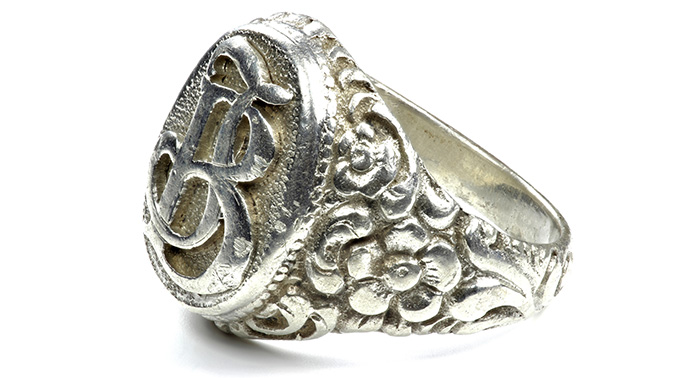We all appreciate the beauty and style that modern jewellery brings and the incredible joy we get from nature’s colourful stones.
But throughout history jewellery has often taken on more than one use, a second purpose designed to offer a useful function to its owner. Join us as we explore some of these items and delve a little into their history...
Signet Ring

In the age of passwords and pin numbers it’s easy to forget that the problem of personal identification goes back way beyond the modern age. Signatures were often thought of as too easy to forge, so on important documents signet rings were used to make a proprietary mark of approval instead. Each signet ring featured a unique design, often a family crest or variation thereof, which could be used to identify the individual ring holder. The design was carved into the metalwork in reverse so when the ring was stamped down into wax or clay it would leave a positive impression of the mark. There’s evidence to suggest that the use of signet rings dates back at least 5,000 years, and throughout history they’ve been used by Egyptian Pharaohs, such as Cleopatra, and also by the likes of William Shakespeare. The Pope traditionally still wears one.
Perfume Locket

History stinks… literally! Between the 15th and 18th centuries, daily bathing was discouraged by the physicians of the time as there was a belief that opening the pores in the skin could 'let in' disease. This meant people tended to only wash the parts of their bodies that were visible when clothed. This led to the need to mask the accompanying odours, and whilst this did see an increase in the wearing of freshly laundered clothes more often than had been commonplace, it didn't solve the problem. Ladies started carrying around small silver boxes with tiny holes in them called vinaigrettes. They contained sponges soaked in aromatic liquids which would slowly release their scent, and in time these boxes came to be worn around the neck. As perfume developed, so too did these pendants, which evolved into small bottles with a liquid scent inside that could be applied to the skin.
Photograph Locket

Lockets had been given for hundreds of years before the invention of photography and quite often contained a tiny painted portrait of the gift giver. These intricately crafted items were perfect as it allowed people to keep their loved ones close to their heart. Photography as we know it has its roots in the 1820s and in those formative years having your picture taken was a big event, so small photographic prints became the natural successor to painted portraits as technology advanced. Over time they came to be associated with Valentine’s Day, christenings, engagements and weddings. In the Victorian age they were given at funerals. With the advent of smartphones and social media, it could be argued that we take photography for granted these days, but the photo locket remains a special and meaningful way to keep close the nearest and dearest people in our lives.
Poison Ring

Poison rings first became popular in Europe in the 16th century. The bezel, which was often hinged, could be opened allowing the owner to surreptitiously drop some poison into the food or drink of an adversary. They were also popular with criminals who, fearful of being captured and tortured, would take the poison themselves. Over time these secret compartments have been embraced for much happier functions, like storing a small amount of perfume, containing small painted portraits of loved ones or even for holding a lock of hair. The concept continues to fascinate, and has recently been brought bang up-to-date. Micro SD cards are small enough to fit into the secret compartment of some rings, allowing people to carry increasingly large amounts of data, such as digital photos, music or documents, around with them safely.
Brooch

The history of the brooch reaches back much further than you might expect. Their decorative use of recent times betrays their roots in pure practicality, with the earliest examples harking from the Bronze age (circa 3200 to 600 BC in Europe), which were simply used to fasten clothes. Often these earlier examples were made from bone, although metals such as gold, silver and, appropriately enough for the era, bronze were also used. Over the many centuries they’ve kept their practical function whilst being imbued with gemstones and more intricate and decorative metalwork. Brooches have somewhat come back into fashion in recent years, with big-name designer brands such as Chopard and Chanel reintroducing brooches to their jewellery collections. It just goes to show that fashion is cyclical and that the elegant grace of a brooch will always be in style.
You can explore our entire range of jewellery designs by clicking here.

